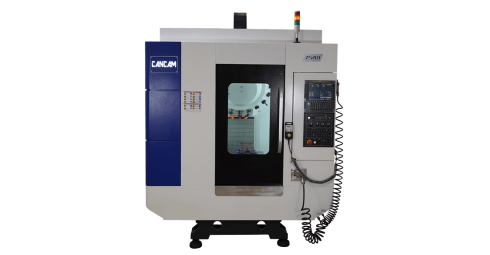Tips for Cutting Aluminum on a CNC Router
Most CNC routers are capable of cutting most materials from various woods and plastics to nonferrous metals. Difficulties do arise once you start cutting harder materials, whether it is light engraving or roughing out large amounts of material. Aluminum is definitely a material that falls under this category. Cutting with spindle speeds and feed rates that are too high or too low have varying effects on the quality of the cut and the longevity of the cutter. Finding a “sweet spot” for these speeds and feeds values a lot more difficult for aluminum because there is a smaller range of values that can be used to optimize the cutting. In addition, aluminum is also a very malleable material. Due to its ductility, aluminum tends to melt and weld to the tool cutter and to the surface where the tool path was during cutting. Despite these many factors, cutting aluminum can yield exceptional results is done properly. Here are some tips that will help make your next time cutting aluminum more successful.
- Take your time cutting
The price that will have to be paid for success in cutting aluminum will be to slow down your manufacturing process. Rushing your machining process will not help in achieving a good finish. This does not mean to outright slow down your feeds and speeds, more so the overall material Removal Rate. Making multiple passes for cuts deducting more material will improve the tool life and finished product look.
- Use Proper Feeds and speeds
As mentioned above, the “sweet spot” for the speeds and feeds is in a small range for aluminum. Cutting at a high rpm produces a lot of friction which melts the aluminum and welds it to the tool. A feed rate that is too high causes deflection on the tool which will result in a lot of broken bits. Cutting at a low rpm may give a poor surface finish and contribute the deflection of the tool. Feed rates that are too low causes “rubbing” which results the cutter to just plough through along the surface, rather than producing nice clean chips which is intended. It is recommended to use a Feeds and Speeds calculator, since using the right feeds and speeds is one of the most important factors that need to be taken into account in order to have success in cutting aluminum.
- Use Proper Tools:
Using tools designated for cutting aluminum will help prolong the life of your tools. Carbide cutters are recommended because it does allow for higher RPMs which mean you can cut faster. The faster you cut the more products you can manufacture.
The number of flutes must also be taken into account when you choose the tools you want to use when cutting. Typically you will want to use cutters with 3 flutes or less. The fewer the flutes, the more space between the cutting edges which results in bigger chips and more room for them to be escape.
- Clear Chips
Clearing chips will be one of the most important things you will need to do to ensure that your bits don’t break. Recutting chips will reduce the probability of wearing down or breaking your tool exponentially. Ensure that your dust collection system is reliable enough to extract all the chips. Accounting for deep cuts and slotting will need to be monitored since chips will be more difficult to extract. Blasting chips away with compressed air is a measure that can be taken to aid in clearing chips.
- Lubricate with mist
Lubricating your tool bit with a coolant mist produces many positive results. It helps reduce the friction of the tool bit allowing you to cut faster, manufacturing more products. In addition, the lubrication reduces the likelihood of the chips tendency to stick to the cutting edge. The trade of is that it creates a considerably messier manufacturing process. You could get away without lubrication for cutting very thin aluminum or for light engraving; otherwise, it will be difficult to cut under any other circumstances.
Machining aluminum with a CNC router is something that takes a lot of consideration. Often times it may take a few instances of trial and error to get things down, but once you do, you will find that it becomes increasingly viable for production.










